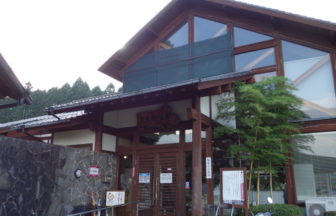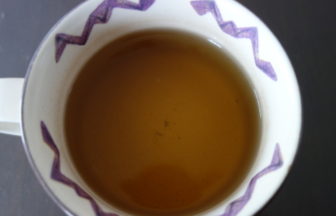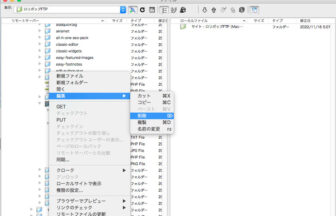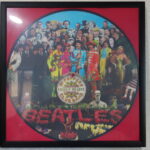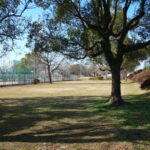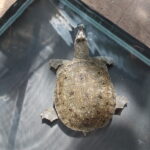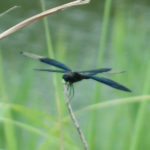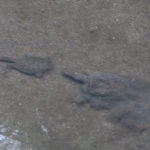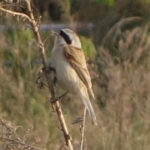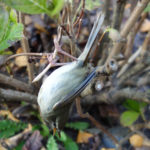CONTENTS
- General features of Japanese
- Japanese writing
- Japanese Pronunciation
- Short pronunciation of vowels
- Long pronunciation of vowels
- Consonants
- The Ka-ta-ka-na syllabary
- Ka-ta-ka-na with sonant (G, Z, D, B) and half-sonant (P) syllables
- Ka-ta-ka-na with consonant (k, s, t, n, h, m, r) and semi-vowel (y, h) and vowel (a, i, u, e, o) syllables
- Ka-ta-ka-na with sonant (G, Z, B) or half-sonant (P) and semi-vowel (y, h) and vowel (a, i, u, e, o) syllables
- The Hi-ra-ga-na syllabary
- Hi-ra-ga-na with sonant (G, Z, D, B) and half-sonant (P) syllables
- Hi-ra-ga-na with consonant (k, s, t, n, h, m, r) and semi-vowel (y, h) and vowel (a, i, u, e, o) syllables
- Hi-ra-ga-na with sonant (G, Z, B) or half-sonant (P) and semi-vowel (y, h) and vowel (a, i, u, e, o) syllables
- The Ka-ta-ka-na letters below are not in the above table. They are used to write sounds of loanwords. These are not original japanese sounds
- Months of the year
- Days of the week
- Four seasons
- Days of the month
- Ways of counting
- Time
- Numerals
General features of Japanese
The Japanese language is composed of verbs, adjectives, nouns, adverbs, conjunctions, particles, and so on. In Japanese, predicates always come at the end of sentence. Modifiers always appear in front of the modified word(s). Predicates are formed from verbs, adjectives, nouns and です or だ in the present tense, for example. They inflect according to whether they are (1) affirmative or negative, (2) past or non-past. They do not inflect for person, gender or number. Particles are used after a word or at the end of a sentence. They indicate relationships between words and add various meanings. Subjects and objects are often omitted if they can be understood from the context.
Japanese writing
There are three types of script in Japanese, that is, hiragana, katakana, and kanji (Chinese characters). Hiragana and katakana are phonetic symbols and are purely representing sounds, while kanji are ideographs that convey meanings as well as sounds. Japanese is usually used with a combination of hiragana, katakana, and kanji. Katakana is used to write foreign names and loanwords. Hiragana is used to write particles and the grammatical endings of verbs and adjectives. Romaji are the letters of the Roman alphabet. They are also used to write Japanese for the convenience of foreigners. You can find Romaji at every place in the town, for example, at train station.
Japanese Pronunciation
Kana and Mora
A ‘mora’ is a unit of sound equivalent in length to one Japanese kana or two of the contracted sounds called yo-on (拗音) which are written in regular sized and small kana.
Japanese language has only five basic vowels: あ(a), い(i), う(u), え(e), お(o). These vowels are used alone or attached to either a consonant (e.g., k + a = か, s + a = さ) or to a consonant + the semi-vowel ‘y’ (e.g., k + y + a = きゃ, s + h + a = しゃ). The only exception is a special mora, ん, which is not followed by a vowel. All of these sounds are equal or more or less equal in length when they are spoken.
These vowels are pronounced like those of German or Latin. Pronunciation is different from that of English language. For example, when Japanese words have double consonants like “Nippon”, you have to pronounce them like double consonants as “Nip-pon”. In other words, pronounce as if stumbling over in between the two consonants very shortly like “stopping”, “motto” and “cutting”.
You have to pronounce Japanese words without any particular accent. Most Japanese words end in vowels. So, you have to pronounce Japanese words separately and clearly by placing equal stress on each syllables. For example, “Tokyo” is pronounced as “To-Kyo. “Tomato” is “to-ma-to” without any strong accent.
The word order of a sentence is also different.
In general, Japanese words don’t have plural form, e.g., plural form of “flower” is “flowers”, but “ha-na (花)” is “hana (花)”.
Japanese can be written phonetically in kana as shown below.
Short pronunciation of vowels
| is pronounced like the “u” in “cut” | |
| is pronounced like the “i” in “pink” | |
| is pronounced like the “u” in “full” | |
| is pronounced like the “e” in “end” | |
| is pronounced like the “o” in “fog” |
Long pronunciation of vowels
| is pronounced like the “ar” in “farm” | |
| is pronounced like the “ee” in “feel” | |
| is pronounced like the “oo” in “cool” | |
| Pronounce like the “a” in “pale” [péɪl] with not only no pronunciation of [ɪ] but elongation like [éː]. It is likely that this pronunciation [éː] is not found in English words. | |
| is pronounced like the “or” in “sort” |
Consonants
| is pronounced like the “sh” in “ship” | |
| is pronounced like the “ch” in “channel” | |
| is pronounced like the “ts” in “Mets” and “gets” | |
| is pronounced like the “dge” in “Dodgers” |
The Ka-ta-ka-na syllabary
Ka-ta-ka-na with sonant (G, Z, D, B) and half-sonant (P) syllables
Ka-ta-ka-na with consonant (k, s, t, n, h, m, r) and semi-vowel (y, h) and vowel (a, i, u, e, o) syllables
Ka-ta-ka-na with sonant (G, Z, B) or half-sonant (P) and semi-vowel (y, h) and vowel (a, i, u, e, o) syllables
The Hi-ra-ga-na syllabary
Hi-ra-ga-na with sonant (G, Z, D, B) and half-sonant (P) syllables
Hi-ra-ga-na with consonant (k, s, t, n, h, m, r) and semi-vowel (y, h) and vowel (a, i, u, e, o) syllables
Hi-ra-ga-na with sonant (G, Z, B) or half-sonant (P) and semi-vowel (y, h) and vowel (a, i, u, e, o) syllables
The Ka-ta-ka-na letters below are not in the above table. They are used to write sounds of loanwords. These are not original japanese sounds
Months of the year
| I-chi-ga-tsu(1月) | |
| Ni-ga-tsu(2月) | |
| San-ga-tsu(3月) | |
| Shi-ga-tsu(4月) | |
| Go-ga-tsu(5月) | |
June |
Ro-ku-ga-tsu(6月) |
July |
Shi-chi-ga-tsu(7月) |
| Ha-chi-ga-tsu(8月) | |
| Ku-ga-tsu(9月) | |
| Ju-ga-tsu(10月) | |
| Ju-i-chi-ga-tsu(11月) | |
| Ju-ni-ga-tsu(12月) |
Days of the week
| Sunday | Ni-chi-yo-bi(日曜日) |
|---|---|
| Monday | Ge-tsu-yo-bi(月曜日) |
| Tuesday | Ka-yo-bi(火曜日) |
| Wednesday | Su-i-yo-bi(水曜日) |
| Thursday | Mo-ku-yo-bi(木曜日) |
| Thursday | Kin-yo-bi(金曜日) |
| Saturday | Do-yo-bi(土曜日) |
Four seasons
| Spring | Ha-ru(春) |
|---|---|
| Summer | Na-tsu(夏) |
| Autumn [fall] | A-ki(秋) |
| Winter | Hu-yu (Fu-yu)(冬) |
Days of the month
| Tsu-i-ta-chi(1日) | |
| Hu-tsu-ka(2日) | |
| Mik-ka(3日) | |
| Yok-ka(4日) | |
| I-tsu-ka [Go ni-chi](5日) | |
| Mu-i-ka [Ro-ku ni-chi](6日) | |
| na-no-ka [shi-chi ni-chi](7日) | |
| Yo-ka [Ha-chi ni-chi](8日) | |
| Ko-ko-no-ka [Ku ni-chi](9日) | |
| To-ka(10日) | |
| ju-i-chi ni-chi(11日) | |
| Ju-ni ni-chi(12日) | |
| Ju-san ni-chi(13日) | |
| Ju-yok-ka [Ju-yon ni-chi](14日) | |
| Ju-go ni-chi(15日) | |
| Ju-ro-ku ni-chi(16日) | |
| Ju-shi-chi ni-chi(17日) | |
| Ju-ha-chi ni-chi(18日) | |
| Ju-ku ni-chi(19日) | |
| Ha-tsu-ka [Ni-ju ni-chi](20日) | |
| Ni-ju-i-chi ni-chi(21日) | |
| Ni-ju-ni ni-chi(22日) | |
| Ni-ju-san ni-chi(23日) | |
| Ni-ju-yok-ka [Ni-ju-yon ni-chi](24日) | |
| Ni-ju-go ni-chi(25日) | |
| Ni-ju-ro-ku ni-chi(26日) | |
| Ni-ju-shi-chi ni-chi(27日) | |
| Ni-ju-ha-chi ni-chi(28日) | |
| Ni-ju-ku ni-chi(29日) | |
| San-ju ni-chi(30日) | |
| San-ju-i-chi ni-chi(31日) |
Ways of counting
Time
| I-chi ji(1時) | |
| Ni ji(1時) | |
| San ji(3時) | |
| Yo ji(4時) | |
| Go ji(5時) | |
| Ro-ku ji(6時) | |
| Shi-chi ji(7時) | |
| Ha-chi ji(8時) | |
| Ku ji(9時) | |
| Ju ji(10時) | |
| Ju-i-chi ji(11時) | |
| ju-ni ji(12時) | |
| ju-san ji(13時) | |
| Go-go i-chi ji(午後1時) | |
| Go-zen i-chi ji(午前1時) | |
| Go-zen ju-ni ji(午前12時 = 午後0時) | |
| Go-zen re-i ji(午前0時 = 午後12時) |
Numerals
Kanji |
|||
|---|---|---|---|




